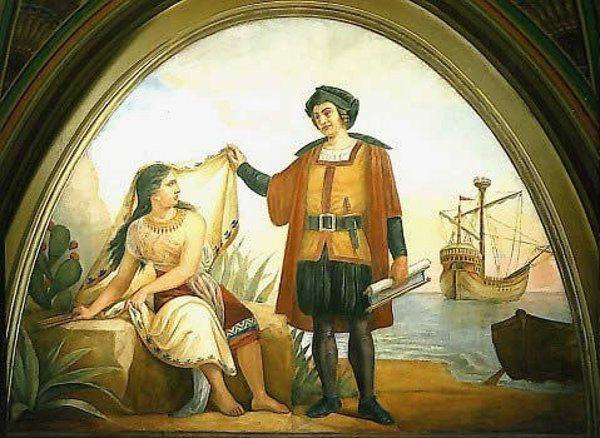9 Teaching Resources That Tell the Truth About Columbus

Finding good teaching materials for Columbus Day is like searching for a needle in a haystack. States and cities are increasingly recognizing Indigenous Peoples, but appropriate and readily available lesson plans have fallen behind the trend.
The times they are a-changing for Christopher Columbus. In 1990, only three states failed to honor the genocidal and delusional navigator. The word is getting out, though, and this year, 16 states will not celebrate him. One by one, cities are also taking matters into their own hands. Seattle will now recognize Indigenous Peoples’ Day, following Minneapolis and San Francisco.
RELATED: Indigenous Leaders Celebrate Victory Over Columbus Day in Seattle
But still, even reputable organizations like the National Education Association don’t offer a single online Columbus Day lesson plan we’d recommend. There are a few decent videos out there, but most of them say Natives came from Asia. Others gloss over the genocide as if worried about the delicate ears of the children they teach. But is it the children or the adults who feel the need to insulate their thin-skinned patriotism?
Consider the thoughts of Wisconsin high school student, Savana Stuhl, 17, who said, “I was probably in fifth grade when my mom told me about Columbus. At first I didn’t believe her because at school he was called a hero, he found America, he came here first. Then my mother read me a book about the true story that he wasn’t the first one here.” Stuhl now feels even very young children should be told the truth. “I think younger kids could handle it. It is important they know he wasn’t a hero.”
In Prescott, Wisconsin, AP History teacher Jeff Ryan agrees. “I would argue that anyone who thinks students aren’t capable of weighing different perspectives, boy that’s a dangerous way to think,” he said. Ryan’s lesson plans include the writings of Friar Bartolome Las Casas, who detailed the atrocities after Columbus’s arrival in horrific detail.
Describing the resistance of some people to accept the truth, Ryan said, “If factual information is so brand new, something they have never heard before, and if it is the opposite of what they believe, then they think it is biased. The challenge as a teacher is not about trying to change minds. It is about opening minds, and doing it rationally.”
In Wisconsin, ACT 31 makes Native Studies mandatory. “And it is filtering its way into primary and elementary grade levels,” Ryan said. I have an 8-year-old who came back from her first grade class—she told me, ‘You know Columbus was an explorer, but he did some really bad things. He did mean things to the Native people.’”
In this new era of honesty in history, where can teachers go for good information? We came up with a list of nine resources: good ideas, books and one lesson plan that work even for very young children.
Rethinking Columbus
The most highly recommended reading, by Oyate.org and American Indian Children’s Literature, is Rethinking Columbus. The book offers this summary: “...the Columbus myth is a foundation of children’s beliefs about society. Columbus is often a child’s first lesson about encounters between different cultures and races. The murky legend of a brave adventurer tells children whose version of history to accept, and whose to ignore. It says nothing about the brutality of the European invasion of North America.” Writings from N. Scott Momaday, Cornell Pewewardy, Barb Munson, Rosalie Little Thunder, Winona LaDuke and many more. It is a readily available source that offers a real Native perspective.
© 1998 - 2014 Indian Country Today. All Rights Reserved To subscribe or visit go to: http://www.indiancountry.com
Read more at http://indiancountrytodaymedianetwork.com/2014/10/13/9-teaching-resources-tell-truth-about-columbus-157311